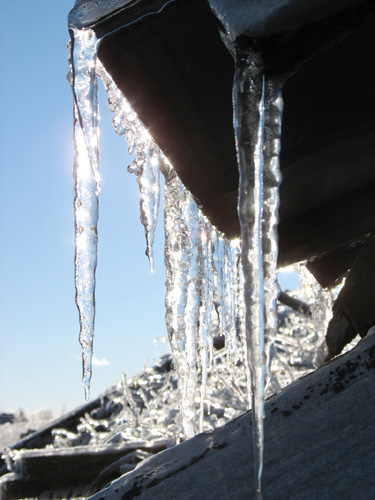Enduring the Cold with Roof Winterization Tips
Roof Winterization Tips
 Your roof is a critical part of your home’s defense against the elements, and winter can wreak havoc on it. To maintain your roof’s integrity and fend off costly damage caused by bitter snow, ice and wind, check out these simple, do-it-yourself winterization tips offered by LGC Roofing.
Your roof is a critical part of your home’s defense against the elements, and winter can wreak havoc on it. To maintain your roof’s integrity and fend off costly damage caused by bitter snow, ice and wind, check out these simple, do-it-yourself winterization tips offered by LGC Roofing.
- Debris removal and tree trimming: Clearing your roof and gutters of branches and debris helps ensure proper drainage as ice begins to melt. While you may be able to clear twigs and leaves from a ladder, it may be necessary to climb onto the rooftop in some cases-depending on your roof’s architecture. Wearing heavy gloves to protect your hands from sharp objects, carefully remove debris piles from the roof and gutters. If possible, direct downspouts away from the house and run water through cleared gutters to wash out remaining dirt buildup.
- Tree Trimming: If you have low hanging branches near your home, keep them trimmed so they don’t put added pressure on your roof’s structure. It may be best to hire a landscaping professional to handle the maintenance of large trees.
- Inspect gutters for wear and damage: After cleaning out gutters and eaves, perform a visual inspection of your roof’s drainage system. Make a note of gutter cracks, rusty spots or holes, as you may soon need to fix these or hire someone to repair them. It is simpler–and less expensive–to replace small portions of the gutter rather than waiting until extensive damage has occurred. It’s also important to ensure that your gutters are soundly mounted along each portion of your home’s perimeter.
- Inspect flashing and roof covering: Look for buckled or broken shingles, make sure flashing is properly sealed, and check that roof edges are firmly attached. Rain, wind and ice dams can cause extensive damage along roof seams and around the roof edge, so it’s important to ensure that all materials are secure and that there are no flashing tears or shingle warping.
- Look for algae and moss growth: Dark areas of lichen or roof algae don’t just affect your home’s visual appeal. They are also an indicator that portions of your home’s roof are damper than others, and over time, this continual moisture buildup may cause excessive shingle and structural wear. Keep an eye on these areas, and call a qualified roofer if you’re concerned about excessive water damage.
It’s important to remember that a thorough, winter maintenance program can prevent weather-related leaks, roofing decay and gutter damage—and will ultimately prolong the life of your roof.
—-
Guest Post by: Lukasz Sobczuk is the owner of LGC Roofing, NJ roofing and siding company.













Leave a comment